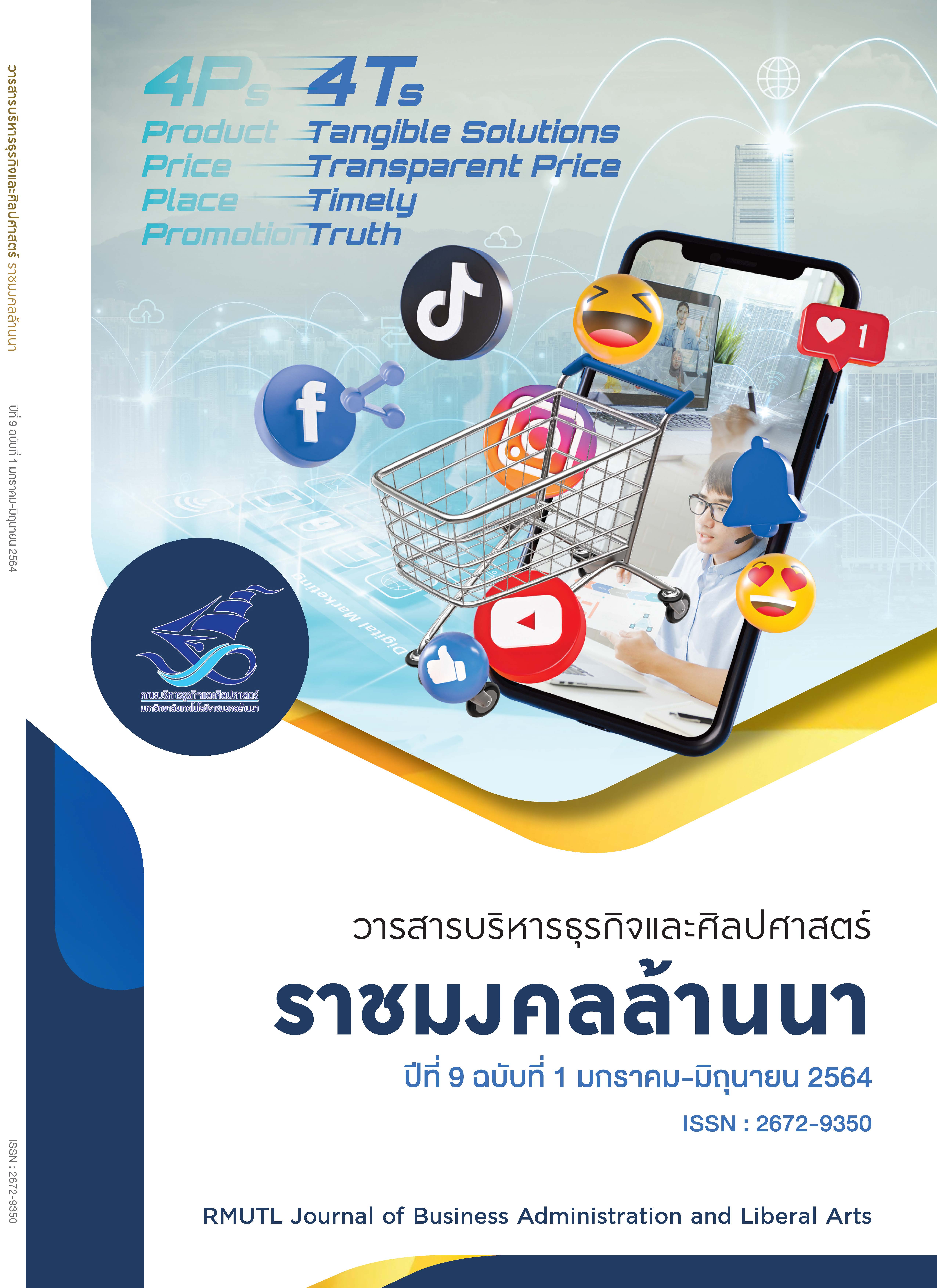Factor effect to Customer Acceptance towards e-Payment System: A Case Study in Chiang Mai
Main Article Content
Abstract
This research aims to study the level of customers’ opinionson the usefulness, the easy use of technology, and the acceptance of an e-Payment system; and investigate the factors effecting customers’ acceptance of an e-Payment system. The 360 subjects in Chiangmai were chosen by simple random sampling.
The results showed that the highest level of opinions on customers’ acceptance of e-Payment system was on the perception of the ease of the use of the e-Payment, and the usefulness of the system, respectively.
In terms of the factors affecting their acceptance, the results indicated that the perception of the ease of the use of the e-Payment system and the perception of the usefulness of the e-Payment system were statistically significant at a level of 0.05. Also, the different income level and occupation of the customers affect the acceptance of e-Payment technologies differently.
Article Details
บทความวิจัยนี้เป็นของลิขสิทธิ์
References
ธนวรรณ สำนวนกลาง. (2559). การยอมรับเทคโนโลยีการทำธุรกรรมทางการเงินรูปแบบ “M-Banking”. (วิทยานิพนธ์ปริญามหาบัณฑิต). ปทุมธานี: มหาวิทยาลัยธรรมศาสตร์.
ธนวรรธน์ พลวิชัย. (2559). National e-Payment ระบบชำระเงินอิเล็กทรอนิกส์. สืบค้น 3 กรกฎาคม 2559, จาก https://www.thairath.co.th/content/653154
สำนักวิชาการสำนักงานเลขาธิการสภาผู้แทนราษฎร. (2558). เศรษฐกิจดิจิทัล (Digital Economy): นโยบายขับเคลื่อนเศรษฐกิจใหม่. สืบค้น 28 พฤศจิกายน 2561, จาก http://library2.parliament. go.th/ejournal/content_af/2558/mar2558-2.pdf
สุพัฒนพงษ์ พันธ์มีเชาว์. (2563). สุพัฒนพงษ์ เล่าเบื้องหลังความสำเร็จ “โครงการคนละครึ่ง”. สืบค้น 25 พฤศจิกายน 2563, จาก https://www.bangkokbiznews.com/news/detail/910648./
สุรพงษ์ คงสัตย์ และธีรชาติ ธรรมวงค์. (2551). การหาค่าความเที่ยงตรงของแบบสอบถาม IOC มหาวิทยาลัยมหาจุฬาลงกรณราชวิทยาลัย. สืบค้น 17 มกราคม 2562, จาก http://www.mcu.ac.th/site/articlecontent_desc.php.article_id=656&articlegroup_id=146
อรทัย เลื่อนวัน. (2555). ปัจจัยที่มีผลต่อการยอมรับเทคโนโลยีสารสนเทศ: กรณีศึกษากรมการพัฒนาชุมชนศูนย์ราชการแจ้งวัฒนะ. (การค้นคว้าอิสระปริญญามหาบัณฑิต). ปทุมธานี: มหาวิทยาลัยราชมงคลธัญบุรี.
อัครเดช ปิ่นสุข. (2555). การยอมรับเทคโนโลยีสารสนเทศ คุณภาพการบริการอิเล็กทรอนิกส์ และส่วนประสมการตลาดในมุมมองของลูกค้าที่ส่งผลต่อความพึงพอใจ (E-satisfaction) ในการจองตั๋วภาพยนตร์ออนไลน์ผ่านระบบแอปพลิเคชันของผู้ใช้บริการในจังหวัดกรุงเทพมหานคร. (การค้นคว้าอิสระปริญญามหาบัณฑิต). ปทุมธานี: มหาวิทยาลัยกรุงเทพ.
Anastasia, R. and Nikolaos, T. (2018). Extension of Technology Acceptance Model by Using System Usability Scale to Assess Behavioral Intention to Use e-Learning. ICT in Education Group, Dept. of Educational Sciences and Early Childhood Education, University of Patras Rio, Patras, 26500.
Davis, F. D. (1989). Perceived Usefulness, Perceived Ease of Use, and User Acceptance of Information Technology. MIS Quart, 13: 319–339.
Davis, F. D. and Venkatesh, V. (2000). A Critical Assessment of Potential Measurement Biases in the Technology Acceptance Model: Three Experiments. Internet J. Human-Compute Study. 45: 19–45.
Davis, F. D., Bagozzi, R., and Warshaw, P. (1989). User Acceptance of Computer Technology A Comparison of Two Theoretical Model. Management Science, 35: 982–1003.
RJOAS, (2018, June). Technology Acceptance Model (TAM). Theoretical Framework, 6(78).
